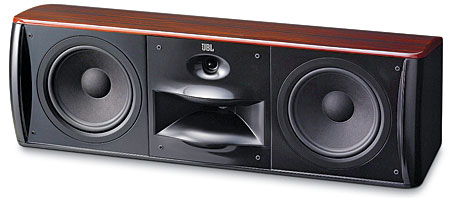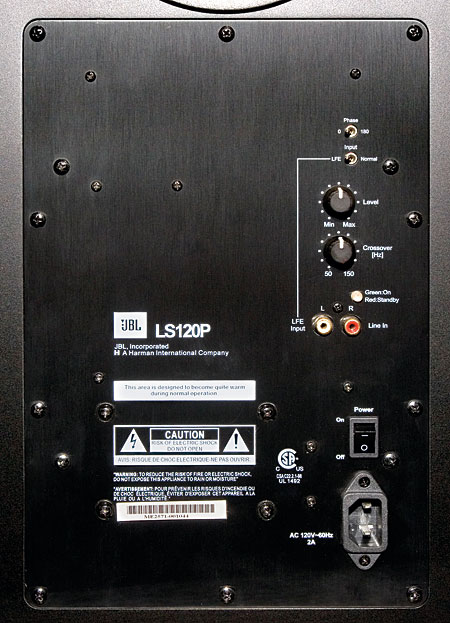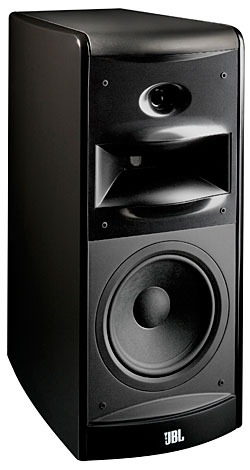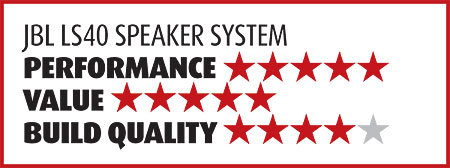JBL LS40 Speaker System Page 2
Depressives, Cannibals, and Robots
Although the Performance LS speakers delivered a well-balanced top-to-bottom presentation, the high frequencies were what I noticed first. I must tread carefully here because I don’t want to imply that the highs overwhelmed everything else—they weren’t notably out of proportion with the midrange. The tweeter and supertweeter were clear and present in a way I wasn’t used to. They were pure, clean, extended, fully developed, and tightly focused. The LS40 and LS Center aren’t trebly speakers, but they still have excellent treble. Mids could be intense or laid back depending on the source material. Bass was never an issue—the LS120P served it up generously. Due to the dispersion of the regular tweeter’s Bi-Radial horn, the front soundstage remained well defined even when I moved left or right of the prime listening position. As a whole, the soundfield was large, open, and dynamically eventful at any volume level. Master volume was largely a set-and-forget affair. I didn’t have to make frequent changes to avoid fatigue.

For a change, the movie that made the greatest impact wasn’t an action movie. The Last Word is about a poet (Wes Bentley) who pays the rent by writing suicide notes for hire. He remains fairly unmoved by the process until he runs into the sister of one client (Winona Ryder) and becomes friends with another (Ray Romano), a composer who grumpily provides the movie’s bittersweet comic highlights. The sweetly meditative score features gorgeous massed strings and was most effective in its quietest moments: hammered dulcimer over low strings and a nocturne for piano and string orchestra written by the composer character. With the utmost delicacy and finesse, the JBLs made the most of this low-key material and gently underscored the movie’s emotional moments.
Whereas the strings in the first movie were designed to blossom and captivate, the ones in Wrong Turn 3 function as a weapon, with prolonged dissonant passages that step up the tension. If this movie had been my sole demo material, I might have concluded that the speakers had an edgy feeling, but they were just reacting to the source. Edgy in, edgy out. The story is about white-water canoe enthusiasts preyed on by bucolic cannibals whose dental hygiene leaves much to be desired. It comes with its quotient of subwoofer-borne thrills, including a most satisfying bus crash and plenty of booming synth drums. I promise never to discuss the Wrong Turn series in print again. Until the next one comes out on Blu-ray.

Surrogates stars Bruce Willis as a cop investigating a murder and a cover-up with larger implications in a world where most people use Stepford Wives–like robotic surrogates to live their lives while their living bodies lie pathetically in darkened homes. The advantage of a system with matched speakers anchoring all four corners of the soundfield practically grabbed me by the neck when a car crash thundered from the front channels to the rear. A war scene presented a huge, well-focused soundfield. Throughout, the speakers’ laser-like focus was constantly involving. It enhanced the movie’s predictable but fulfilling dramatic momentum.
Invitation to the Suite on Broadway
Invitation features Swiss jazz singer Beat Kaestli performing American songbook classics. Like many Chesky releases, the multichannel hybrid SACD shut down both the center and low-frequency channels. Each song was recorded by a single-point microphone, in unbroken takes, with no dubbing. This rigorously recorded material was then reproduced in quad by the four identical LS40s in each corner of the room. Kaestli’s voice—with its essential warmth, gentle phrasing, and minimal vibrato—benefited from the full, rich, liquid midrange that this combination of recording and speakers affords. However, it was the one thing in the whole review process that reminded me of the cupped-hands feeling. The horn-focused tweeters brought out the breathiness of both the trumpeter and saxophonist. It reminded me that musicians are living beings with lungs. The Chesky approach to recording thrives on this kind of speaker. I’ve heard a lot of Chesky SACD releases made with similar methodology, but this was the most indelible listening experience I’ve had with any of them.
 PentaTone’s multichannel SACD of Rimsky-Korsakov’s Orchestral Suites, with Mikhail Pletnev and the Russian National Orchestra, features excerpts from The Snow Maiden, The Tale of the Invisible City of Kitezh, and Mlada. Unlike the Chesky release, this disc uses all 5.1 channels. This time, the midrange wasn’t particularly warm or voluptuous. The highs were also more prominent, although they weren’t strident, steely, or hard-edged. “All gain, no pain,” my notes stated. For once, harp wasn’t a vague wash of sound but a many-stringed instrument, its sound formed out of countless tiny events. Tubular bells had a holographic presence and luxurious decay.
PentaTone’s multichannel SACD of Rimsky-Korsakov’s Orchestral Suites, with Mikhail Pletnev and the Russian National Orchestra, features excerpts from The Snow Maiden, The Tale of the Invisible City of Kitezh, and Mlada. Unlike the Chesky release, this disc uses all 5.1 channels. This time, the midrange wasn’t particularly warm or voluptuous. The highs were also more prominent, although they weren’t strident, steely, or hard-edged. “All gain, no pain,” my notes stated. For once, harp wasn’t a vague wash of sound but a many-stringed instrument, its sound formed out of countless tiny events. Tubular bells had a holographic presence and luxurious decay.
To honor the induction of Genesis into the Rock & Roll Hall of Fame—the first of many such additions, prog-rock fans devoutly hope—I played my gatefold double LP of The Lamb Lies Down on Broadway. It’s the last album with Peter Gabriel and the crowning summation of the band’s pre-pop sound. The dominant elements were Tony Banks’ arpeggiated keyboards and Gabriel’s ever-changing vocals, which morph with seeming effortlessness into a variety of textures and moods. These complex textures, the speakers’ powerful grip on the soundfield, the tubed phono preamp, and the Dolby Pro Logic II Music mode’s adaptation of stereo to 5.1 all conspired to create a huge and colorful canvas. I’ve never heard this album in quite this way before, and I mean that in a good way.
It’s unfortunate that a large segment of the audiophile audience will look at the JBL badge and the LS40’s moderate price and avert their eyes. If you’ve ever walked through the high-end audio exhibits at the Consumer Electronics Show (CES)—ducking your head into the door of whatever room sounds good—you’ll hear very few products that can reproduce airy, detailed, luscious high frequencies as well as the Performance LS can. And none that can perform similar feats at the same price.





























































